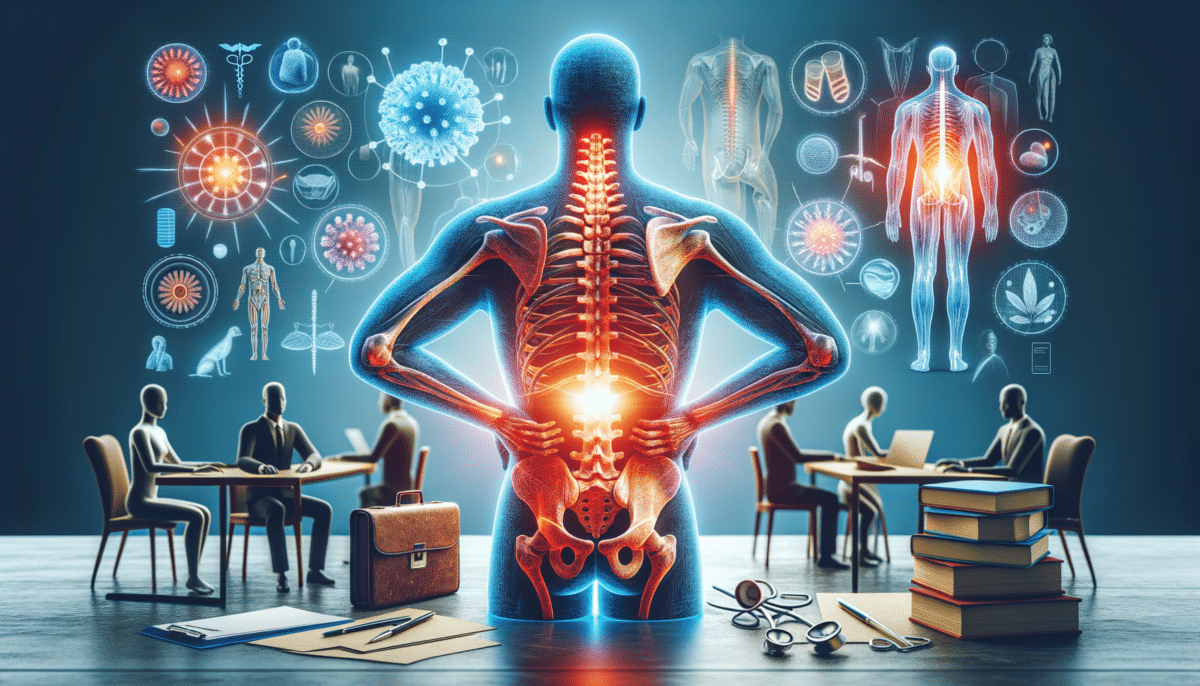Causes and Types of Back Pain
Back pain is a prevalent issue that can stem from various causes, each requiring a specific approach to treatment. The most common types of back pain include acute pain, which is short-term and often results from an injury, and chronic pain, which persists for more than three months. Understanding the underlying cause is crucial for effective treatment.
Acute back pain often arises from muscle strains or sprains due to sudden movements or lifting heavy objects improperly. On the other hand, chronic back pain might be linked to conditions such as arthritis, osteoporosis, or disc problems. Identifying whether the pain is mechanical or inflammatory can guide the treatment process.
Some of the common causes of back pain include:
- Poor posture
- Herniated discs
- Degenerative disc disease
- Spinal stenosis
- Injuries from accidents or falls
Recognizing the type of back pain and its cause is the first step towards finding relief and preventing future occurrences.
Non-Surgical Treatment Options
For many individuals, non-surgical treatments can effectively manage back pain. These options focus on relieving pain, improving function, and enhancing quality of life without the need for invasive procedures.
Physical therapy is a cornerstone of non-surgical treatment, offering exercises tailored to strengthen the back and improve flexibility. Therapists may employ techniques such as manual therapy, heat, or cold therapy to alleviate pain and promote healing.
Medications also play a significant role in managing back pain. Over-the-counter pain relievers, such as non-steroidal anti-inflammatory drugs (NSAIDs), can reduce inflammation and discomfort. In some cases, doctors may prescribe muscle relaxants or stronger pain medications for short-term relief.
Other non-surgical treatments include:
- Chiropractic care
- Acupuncture
- Massage therapy
- Yoga and Pilates
These therapies aim to improve mobility, reduce pain, and prevent further injuries by addressing the root causes of back pain.
Surgical Treatment Options
When non-surgical treatments fail to alleviate back pain, surgical interventions might be considered. Surgery is typically recommended for cases involving structural issues, such as herniated discs, spinal stenosis, or severe degenerative disc disease.
Common surgical procedures for back pain include:
- Discectomy: Removal of a portion of a herniated disc to relieve pressure on nerves.
- Laminectomy: Removal of part of the vertebra to create more space within the spinal canal.
- Spinal fusion: Joining two or more vertebrae to stabilize the spine.
Surgery aims to alleviate pain by addressing the structural problems causing nerve compression or instability. However, it is essential to weigh the potential benefits against the risks, as surgery carries inherent risks and a longer recovery period.
Consulting with a specialist can help determine whether surgical treatment is the most suitable option based on the specific condition and overall health of the patient.
Lifestyle Modifications for Back Pain Management
Incorporating lifestyle changes can significantly impact the management and prevention of back pain. These modifications aim to reduce stress on the back, improve posture, and enhance overall health.
Maintaining a healthy weight is crucial, as excess weight can strain the back and exacerbate pain. A balanced diet rich in nutrients supports bone health and reduces inflammation.
Regular physical activity is essential for strengthening the muscles that support the spine. Activities such as walking, swimming, or cycling can improve cardiovascular health and promote flexibility without putting undue stress on the back.
Other lifestyle changes to consider include:
- Practicing good posture while sitting, standing, and sleeping
- Using ergonomic furniture and supportive mattresses
- Quitting smoking, as it can impede blood flow and healing
- Managing stress through relaxation techniques like meditation or deep breathing
By adopting these lifestyle modifications, individuals can enhance their back health and reduce the likelihood of future pain episodes.
When to Seek Professional Help
While many cases of back pain improve with self-care and lifestyle changes, some situations warrant professional medical attention. Understanding when to seek help can prevent further complications and ensure timely intervention.
If back pain persists for more than a few weeks, or if it is accompanied by symptoms such as numbness, tingling, or weakness in the legs, consulting a healthcare provider is advisable. These symptoms could indicate nerve compression or other serious conditions requiring medical evaluation.
Additionally, if back pain follows an injury or accident, or if it is severe and does not improve with rest and over-the-counter medications, professional assessment is necessary. A healthcare provider can perform diagnostic tests, such as X-rays or MRIs, to determine the underlying cause and recommend appropriate treatment.
Seeking professional help is crucial in cases where back pain significantly impacts daily activities and quality of life. Early intervention can prevent chronic pain and facilitate a quicker recovery.
